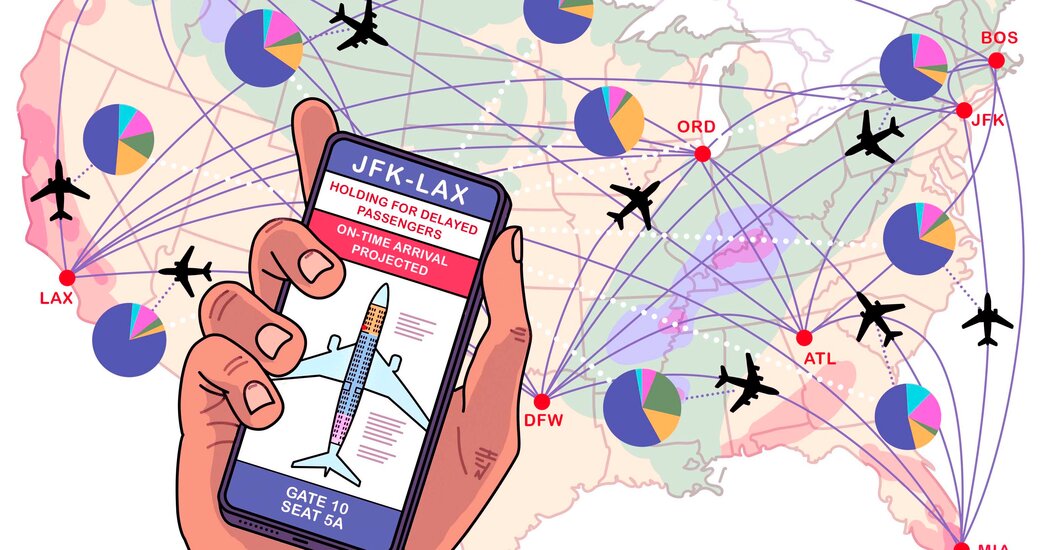Last month in Chicago, a United Airlines flight to London was ready to depart, but it was still waiting for 13 passengers connecting from Costa Rica. The airline projected they’d miss the flight by seven minutes. Under normal circumstances, they’d all be scrambling to rebook.
But thanks to a new artificial-intelligence-powered tool called ConnectionSaver, the jet was able to wait for them — their checked bags, too — and still arrive in London on time. The system also sent text messages to the late-arriving passengers and the people on the waiting jet to explain what was happening.
A.I. still might not be able to find space for your carry-on, but it could help put an end to the 40-gate dash — sprinting to catch your connecting flight before the door slams shut — as well as other common travel headaches.
It’s not just United. Alaska Airlines, American Airlines and others have been working to develop new A.I. capabilities that could make flying easier for passengers. The carriers are also using the technology to reduce costs and streamline operations, including saving fuel, said Helane Becker, an airline industry analyst for the investment bank TD Cowen. Although many of the airlines are developing their programs independently, a successful innovation by any carrier could possibly become an industry standard.
A.I. is poised to change almost every aspect of the customer flying experience, from baggage tracking to personalized in-flight entertainment, said Jitender Mohan, who works with travel and hospitality clients at the technology consulting company WNS.
Saving fuel and frustration
A.I. has been helping Alaska Airlines dispatchers plan more efficient routes since 2021. “It’s like Google maps, but in the air,” explained Vikram Baskaran, vice president for information technology services at the carrier.
Two hours before a flight, the system reviews weather conditions, any airspace that will be closed, and all commercial and private flight plans registered with the Federal Aviation Administration, to suggest the most efficient route. The A.I. takes in “an amount of information no human brain could process,” said Pasha Saleh, the corporate development director and a pilot for Alaska.
In 2023, about 25 percent of Alaska flights used this system to shave a few minutes off flight times. Those efficiencies added up to about 41,000 minutes of flying time and half a billion gallons of fuel saved, Mr. Baskaran said.
On the ground, American Airlines…
Click Here to Read the Full Original Article at NYT > Travel…
